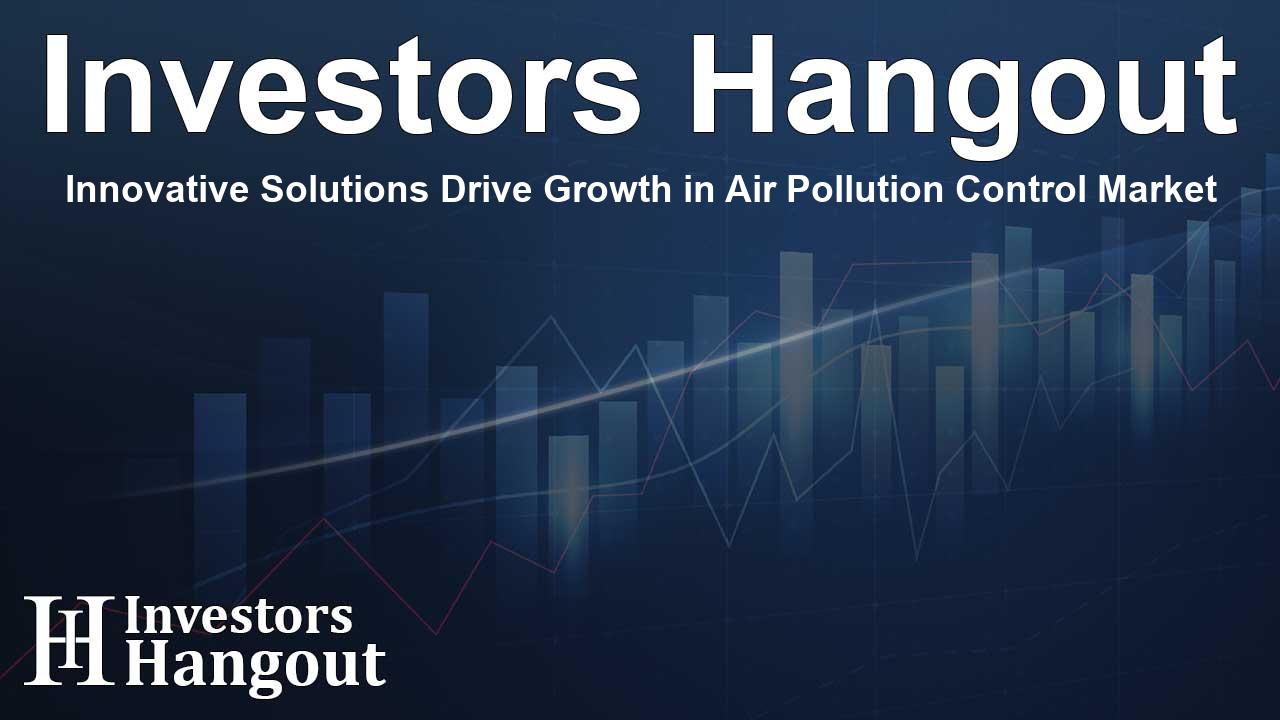Innovative Solutions Drive Growth in Air Pollution Control Market

Emerging Trends in the Air Pollution Control Systems Market
The air pollution control systems market is on an upward trajectory, driven by the increasing enforcement of environmental regulations across various sectors worldwide. As businesses strive to comply with these stringent emission standards, the demand for advanced pollution control technologies is witnessing substantial growth. Industries such as power generation, cement manufacturing, and chemical processing are particularly notable contributors to air pollution, prompting the need for robust solutions.
The Market's Impressive Growth Forecast
Predicted to grow at a compound annual growth rate (CAGR) of 7.8%, the air pollution control systems market is expected to expand from USD 97.9 billion in 2025 to a staggering USD 207.6 billion by 2035. This growth is attributed to the ongoing technological advancements aimed at enhancing energy efficiency and reducing operational costs.
Government Regulations and Industry Adaptation
Governments globally are intensifying their efforts to curb pollution, implementing stricter policies that necessitate the widespread adoption of pollution control technologies. Such measures include the use of scrubbers, catalytic converters, and electrostatic precipitators, all designed to effectively reduce emissions of harmful pollutants like nitrogen oxides (NOx) and volatile organic compounds (VOCs).
Key Technologies Making a Difference
A variety of technologies are gaining prominence in the air pollution control sector, each contributing uniquely to improved environmental standards:
Scrubbers: A Popular Choice
Scrubbers have become a preferred choice for industrial pollution control, mainly due to their high efficiency in removing contaminants from exhaust gases. Sectors such as steel manufacturing and chemical processing are increasingly deploying both wet and dry scrubbers to meet regulatory requirements.
Advancements in Thermal Oxidizers
Thermal oxidizers are critical for breaking down hazardous air pollutants into less harmful substances. Recent advancements in regenerative and recuperative thermal oxidizers have significantly enhanced their efficiency and reduced costs for manufacturers, promoting their adoption across multiple industries.
The Role of Catalytic Converters
Catalytic converters are integral in controlling emissions, especially in sectors facing high levels of NOx and VOCs. With a growing focus on sustainability, many industries are investing in advanced catalytic converters that employ innovative technologies, including nanotechnology, to boost their performance.
Electrostatic Precipitators Gain Traction
Electrostatic precipitators are increasingly favored for their ability to effectively capture fine particulate matter from exhaust emissions. Innovations in their design, such as improved power supplies, have further enhanced the efficiency of these systems, making them a popular choice in power and cement plants.
Future Prospects and Market Dynamics
The future of air pollution control systems looks promising, characterized by a shift towards integrated and multifunctional emissions control solutions. The ongoing integration of artificial intelligence (AI) and the Internet of Things (IoT) in these systems allows for better real-time monitoring and predictive capabilities, ensuring compliance while minimizing costs.
Trends Shaping the Future
As environmental consciousness grows among consumers and businesses alike, industries are expected to prioritize eco-friendly practices. This shift promotes the adoption of advanced air pollution control technologies, assisting in the development of a circular economy focused on recycling and reducing waste.
Conclusion: Navigating the Future of Air Quality Management
As we move towards a more sustainable future, the air pollution control systems market will continue to grow, propelled by regulations, technological innovations, and the increasing recognition of air quality's significance. Companies will need to stay ahead of the curve, adapting quickly to new technologies and regulations to remain competitive in this evolving landscape.
Frequently Asked Questions
What is the projected growth of the air pollution control systems market?
The market is expected to grow from USD 97.9 billion in 2025 to USD 207.6 billion by 2035, exhibiting a CAGR of 7.8%.
Which industries are major contributors to air pollution?
Industries such as power generation, cement, steel manufacturing, and chemical processing are significant contributors to air pollution.
What types of technologies are included in air pollution control systems?
Key technologies include scrubbers, thermal oxidizers, catalytic converters, and electrostatic precipitators.
How are governments influencing the air pollution control market?
Governments are implementing stricter regulations that drive industries to adopt advanced pollution control technologies to meet compliance standards.
What role does technology play in the future of air pollution control?
Technological advancements, particularly AI and IoT integration, will enhance the efficiency and effectiveness of air quality management systems, ensuring stronger compliance and lower costs.
About The Author
Contact Olivia Taylor privately here. Or send an email with ATTN: Olivia Taylor as the subject to contact@investorshangout.com.
About Investors Hangout
Investors Hangout is a leading online stock forum for financial discussion and learning, offering a wide range of free tools and resources. It draws in traders of all levels, who exchange market knowledge, investigate trading tactics, and keep an eye on industry developments in real time. Featuring financial articles, stock message boards, quotes, charts, company profiles, and live news updates. Through cooperative learning and a wealth of informational resources, it helps users from novices creating their first portfolios to experts honing their techniques. Join Investors Hangout today: https://investorshangout.com/
The content of this article is based on factual, publicly available information and does not represent legal, financial, or investment advice. Investors Hangout does not offer financial advice, and the author is not a licensed financial advisor. Consult a qualified advisor before making any financial or investment decisions based on this article. This article should not be considered advice to purchase, sell, or hold any securities or other investments. If any of the material provided here is inaccurate, please contact us for corrections.
